Table of contents
Use in the kitchen
Papaya ( Carica papaya ) can be eaten ripe or unripe. The ripe flesh tastes mildly sweet and is reminiscent of honeydew melon and peach or apricot. Unripe papayas are also known as vegetable papayas because they are more neutral, tart and a little bitter.
Do you have to cook green papaya? You can, but you don't have to. Unripe papaya tastes good both raw in salads and cooked (in chutneys, salsas, soups, rice dishes or stews). Green papayas are an excellent way to refine vegan curries; and as a vegetable, green papaya can be prepared in a similar way to kohlrabi or zucchini .
You can recognize unripe papayas by their color: the young fruits have a green skin and light green to white flesh. The seeds of unripe papayas are white, bitter and inedible, but not poisonous. Only the black seeds of ripe papayas are edible - they have a spicy aroma and their spiciness is reminiscent of nasturtiums orpepper .
Whether ripe or unripe, papayas are cut in half and the seeds are removed. Ripe fruits can be easily scooped out with a spoon. Green ones are peeled with a vegetable peeler and cut into bite-sized pieces. Fans of raw food can use them to make a healthy papaya salad by finely grating the flesh or cutting it into thin strips.
Southeast Asian cuisine often uses green papayas. Som Tam, for example, is a spicy, tangy salad with raw papaya, fish sauce and shrimp - and the national dish in Thailand, Isaan (northeastern Thailand) and Laos. 1 Asians traditionally enjoy the salad with sticky rice . In Laos and Isaan, the dish is usually even spicier and more sour than in central Thailand.
This link takes you to our optimized recipe for a healthy raw vegan som tam salad .
Please note that young fruits do not ripen completely. The ripening process only begins when the fruits have reached a certain level of ripeness, i.e. are slightly yellow. When is a papaya ripe? Ripe fruits can be recognized by the consistently yellow color of the skin and by whether you can press it in a little with your fingers. Cut papayas generally do not ripen any further.
Very young papaya leaves can be cooked and eaten, but they have a bitter aftertaste. Tea made from dried papaya leaves is said to relieve gastrointestinal complaints.
Vegan recipe for a smoothie with papaya (green)
Ingredients: ½ green apple ; 1 frozen banana ; ½ cup peeled, chopped green papaya (raw and organic); ½ cup raw baby spinach ; 1 lime .
Preparation: Put all the chopped ingredients with the lime juice into a blender or smoothie maker and puree until smooth. Depending on the desired consistency, you can add a little fresh tap water . Pour the green smoothie into a cocktail glass and top with dried goji berries, for example.
Vegan recipes with green papaya can be found under the note: " Recipes that have the most of this ingredient ".
| Not only vegans or vegetarians should read this: Vegans often eat unhealthily. Avoidable nutritional errors . |
Purchasing - Storage
Ripe papayas are occasionally available at selected supermarket chains such as Coop, Migros, Denner, Volg, Spar, Aldi, Lidl, Rewe, Edeka, Billa, Hofer etc., but green papayas are rarely available. Asian markets or larger department stores with a good selection of exotic fruits also mostly offer unripe fruit. Organically produced green papayas are sometimes available in organic supermarkets (such as Denn's Biomarkt, Alnatura ) - or you can order them online. In this unripe state, the exotic fruit can be easily shipped without any loss of quality. Papayas do not have a specific season in countries of origin such as Thailand, Hawaii or South Africa; they grow all year round. 25 The same applies to Spanish papayas, although a harvest time between October and November is recommended here. 26
When buying, you should make sure that the green papaya is still very firm. If you press on the green skin with your thumb, it should not give in under the pressure. A well-known papaya variety is called "Kaik Tam" and is about 20 cm long and weighs 500 grams when unripe. Wrapped in foil, it resembles a thicker cucumber. It is also known as salad papaya.
The availability of green papayas varies depending on the size of the store, catchment area, etc. Our recorded food prices for the DA-CH countries can be found above under the ingredient image - and by clicking on them you can see their development at different suppliers.
Storage tips
The optimal storage temperature for green papayas is 12-13 °C. If the fruit is cut or halved, remove the seeds before storing it in the fridge. Covered with foil or in a closed container, they will keep for about 2 days. Half-ripe papayas can be recognized by the yellowish skin, which is no longer completely green. At this stage, the fruit can continue to ripen at room temperature. It is advisable to check the consistency regularly by gently pressing the skin. 3
Ingredients - Nutritional values - Calories
Unripe fruits have even fewer calories than ripe papayas, with 35 kcal/100g. In contrast to their low carbohydrate, protein and fat content, green papayas are rich in vitamins.
According to estimates by the Hawaii Institute of Tropical Agriculture and Human Resources, raw green papayas contain 75 mg of vitamin C (ascorbic acid) per 100 g, which covers 94% of the daily requirement. 30 This puts them not far behind fresh aronia berries (81 mg/100 g) and raw brassicas such as Brussels sprouts (85 mg) orbroccoli florets (93 mg). However, they do not come close to the top values of yellow bell peppers (184 mg). 17
As with ripe fruit, the vitamin C levels of green specimens are subject to fluctuations, making everyday comparisons between unripe and ripe samples difficult. However, it is assumed that the ascorbic acid content increases with ripeness. 30
Papaya fruits are rich in fiber and contain the enzyme papain, which is much more abundant in green papaya than in ripe fruit. 4 However, ripe papayas contain much more vitamin A (47 µg/100g). 17
Papaya also contains magnesium, potassium, pantothenic acid, riboflavin, niacin, selenium, iron and phosphorus . 17.30
The complete ingredients of green papayas, the coverage of the daily requirement and comparison values with other ingredients can be found in our nutrient tables. In the article Nutrients explained you will get a detailed insight into the topic.
Health effects
Are green papayas healthy? Papain is primarily used by the plant itself to ward off pests. It is found in high concentrations in the milky juice (latex) of the green papaya peel - as well as in the white seeds. 22 This proteolytic enzyme also breaks down protein, similar to pepsin 2 in gastric juice. This active ingredient promotes the digestion of food. 22 Unripe papayas, when taken in precise doses (!), help with stomach problems, duodenal ulcers, perforated diaphragm and heartburn. This is because they neutralize excess stomach acid. They also have a positive effect on biliary dyspepsia, chronic inflammation of the pancreas, various intestinal diseases and infectious diarrhea. 5
Plant milk and papaya pulp are also effective against intestinal parasites, 2 especially against the pork roundworm ( Ascaris suum ), which can infect humans as well as pigs. 6
The high vitamin A content of ripe papayas relieves skin diseases such as eczema, furunculosis and acne. 4
Fermented papayas have proven to be useful as dietary supplements in combined therapies against Alzheimer's, cancer or allergic reactions due to their antioxidant effects. 15
Secondary plant substances
Many of the health effects of green papayas can be attributed to the secondary plant substances they contain. Our article on secondary plant substances provides an overview of the classification of substance groups, their occurrence in foods and possible effects on humans.
A papaya fruit contains the following secondary plant substances:
- Polyphenols: phenolic acids (ferulic acid, 6 caffeic acid, salicylic acid 16 ) and flavonoids (quercentin, kaempferol, 6 anthocyanins, myricetin, flavonols, flavones 16 )
- Alkaloids: nicotine, choline and carpain 6
- Sulfur-containing compounds: Glucosinolates 6
- Isoprenoids: Carotenoids (beta-carotene, 6 lycopene, 10 lutein 6 ) and saponins 29
However, it should be noted that the composition of secondary plant substances in green papayas can vary depending on the variety, time of harvest and growing conditions. Therefore, quantities are only of limited use and should only be understood roughly.
Extracts from papaya leaves help against symptoms of dengue fever, which is transmitted by mosquitoes in the growing areas. 7 Studies show that carpain, the most important alkaloid in papaya, and the flavonoid quercetin contribute significantly to the effectiveness against dengue. Carpain also has proven anti-thrombocytopenic (thrombocytopenia = lack of blood platelets), anti-tumor and anti-parasitic properties. 31 Studies on the composition of ingredients in ripe and unripe papaya fruits have shown that carpain is found in higher quantities in the peel of green papayas. 32
Papaya is also believed to have a positive effect on cancer. A series of laboratory tests showed that the isoprenoid lycopene contained in papaya juice induces the cell death of liver cancer cells. Two further studies show that the combination of bioactive substances in the pulp inhibits the growth of breast cancer cells. In 2008, Morimoto et al . secured a patent for the discovered effectiveness of an extract from parts of the papaya for the prevention, treatment or improvement of various types of cancer: stomach, lung, pancreatic, colon, liver, ovarian, neuroblastoma and other types of cancer, as well as lymphoma, leukemia and other types of blood cancer. There are only in vitro studies on the effectiveness of papaya against cancer, but these do show a change in cancer growth. It is therefore recommended that further studies be carried out on the bioactive substances in C. papaya and their anti-cancer effect. 33
A study on metabolic disorders found that the composition of nutrients and phytochemicals in papaya has the potential for hypoglycemic, hypolipidemic and antihypertensive effects as well as enhanced antioxidant activity in experimental in vivo and in vitro models. Further studies are needed to develop nutraceuticals based on papaya extracts for the treatment and prevention of obesity and metabolic disorders. 34
Dangers - Intolerances - Side effects
Since green papayas contain what is known as papaya latex, contact with the eyes should be avoided when processing them. Otherwise, severe irritation can occur. If you are allergic to latex, cross-reactions can also occur: some people are also allergic to papaya pollen, papain or other enzymes in the fruit. 8
Although breastfeeding women in many Asian countries like to eat green papaya salad to stimulate milk production, there is no scientific evidence that the galactagogues (galactogens) in green papaya have a positive effect on milk production. 9 Pregnant women should avoid unripe papaya. The high concentration of latex in unripe or semi-ripe papaya caused uterine contractions in rats, so consumption is not recommended for pregnant women. In addition, the latex in green papaya can cause bleeding at the edge of the placenta in pregnant women, leading to earlier delivery. 12 Fully ripe papaya does not pose a significant risk. 10,11
An animal study has shown that ingredients from papaya seeds inhibit fertility, but only temporarily. 60 days after the end of the treatment, the number of sperm cells in the semen was back to normal. Indigenous peoples are also said to have made use of this effect in the past. 13
Be careful with papaya capsules: If you consume high doses of papaya leaf extracts, the papain they contain can lead to hypoglycemia. However, these extracts also have an antioxidant effect and improve the lipid profile and the functions of the liver and pancreas in diabetic rats. 14
Use as a recognized medicinal plant
Papayas are used in many areas of medicine, 12 however Commission E has only monographed the leaves as a medicinal plant (Caricae papayae folium).
Papain is isolated from papayas using special methods and can thus improve the treatment of herniated discs (chemonucleolysis). 16
Folk medicine - natural healing
There are many uses in folk medicine. Unripe papayas are effective as a home remedy for diarrhea, worms and high blood pressure. An infusion of flowers and parts of the bark (for toothache), the latex juice and the leaves (for malaria) are said to be beneficial to health and, above all, anti-inflammatory when used internally or externally. Indigenous peoples made use of the latex of the papaya to clean wounds.
Unripe papayas are not only known as contraceptives, but in some regions they are also used as an abortion tool. This is why indigenous peoples also used high doses for abortion.
Ecological footprint - animal welfare
Papayas are cultivated in many subtropical regions of the world, including in southeastern Spain in Europe. In order to create climatically stable and protected conditions, papaya plants are often grown in greenhouses. Here they receive the required amount of water via drip systems and misting to prevent phenomena such as growth stopping or the leaves wilting. In winter, additional heating ensures sufficient warmth. The amount of water supplied increases over the growth phase, 26 ultimately around 460 litres of water are needed to produce 1 kg of papayas. 27
Unripe papayas from Brazil or Thailand can be transported to Europe by ship, meaning they have a smaller ecological footprint in terms of CO 2 emissions than ripe fruit. Since their shelf life is limited, they have to be transported to Europe by plane. This releases very large amounts of CO 2 into the atmosphere. When shopping, the transport method can be recognized by the price difference; for example, goods transported by plane are significantly more expensive than fruit transported by ship. 28
In Spain, few pests are known to affect the papaya plant, which is why organic cultivation is the best option. 26 However, on other continents, such as Brazil, pesticides are used to a large extent. These can be detected in the fruit. 29 Accordingly, you should prefer organic products when shopping.
For detailed explanations of various sustainability indicators (such as ecological footprint, CO2 footprint, water footprint), see our article: What does the ecological footprint mean?
Worldwide occurrence - cultivation
The origin of the tropical fruit is not clear. It is believed that it was first domesticated in Central America rather than South America. 2 The papaya is a widespread cultivated plant in subtropical and tropical regions. Today, papaya is grown in Africa, Asia and in South and Central America. It is particularly popular on the Caribbean islands, in Florida, Texas, California and Hawaii. 1
Found in the wild
Carica papaya does not grow in the wild, related wild species can be found in Central and South America. 2 For details, see the ingredient Papaya, raw .
Cultivation - Harvest
Only the seeds of a ripe papaya are suitable for sowing. A loose, nutrient-poor substrate is recommended for cultivation so that the roots develop well. Its pH value should not be above 7, such as with coconut substrate, peat or special potting soil. To ensure that the plant substrate is free of pests and fungi, you can heat organic substrate in the oven for a quarter of an hour to at least 160 °C before use. This is not necessary with coconut substrate and perlite. The substrate must be slightly moist and the heat-resistant container must not be tightly closed because of the steam that is produced. 18
After sowing, place the pot in a warm place with indirect light. The germination process takes about 2-6 weeks and is best done at temperatures between 24 and 30 °C. During germination, the substrate must be moist, but never wet. It is best to use a sprayer for watering. After germination, you should only keep the substrate moderately moist. Two weeks after germination, you can place the plants in a sunny, wind-protected place. In principle, watering the papaya plant correctly is quite a challenge. The so-called melon tree does not tolerate too much moisture, especially in winter. Overwintering is successful at at least 10 °C. 3
Papaya plants thrive best in subtropical or tropical climates. They then grow up to 3 m tall within a year. They sometimes bear their first fruits after just one year. However, the main production is in the 2nd to 4th year, when the plants reach heights of up to 10 m, depending on the variety. Lower temperatures result in smaller fruits. Papayas like full sunlight and well-drained, porous soil.
Further information
Carica papaya L. is a plant species in the melon tree family (Caricaceae). The genus Carica only contains the species described here.
The fleshy consistency of the fruit earned it the nickname 'melon tree fruit' from the European conquerors. From a botanical point of view, however, it is neither a tree nor a fruit in the true sense of the word. The plant is more of a shrub that used to bear smaller berries and now bears giant berries. 3 The papaya plant does not form secondary wood, is often hollow inside and is often filled with water at the base. 2
Papayas have male and female plants that cannot be distinguished from one another in their young stages. This sexual differentiation also makes plantation cultivation more difficult. This can be remedied by planting several young plants in the same seed hole, identifying the male plants by their flowers and then pulling them out again. To ensure good fertilization, around 10% of the male plants are kept in the plantation. 2
There are also hermaphrodites, i.e. those with both sexes on one plant. These hermaphrodites produce slightly smaller fruits through self-fertilization, which are ideal for consumption due to the large number of pieces. However, the hermaphrodite flower can "reverse" over the course of life due to the heterozygous genetic makeup (diploid chromosome sets). This means that an occasional "sex reversal" can occur in hermaphrodite heterozygous flowers (Mm and M H m). Exceptions to this are those with two purely female alleles (mm; M= male, M H = hermaphrodite, m= female). 2
Conventional monoculture cultivation often causes diseases in tropical trees. They are very susceptible to pests such as nematodes, insects, fungi and especially viruses.
In 1992, there was a mass infestation in Hawaii due to the papaya ringspot virus (PRV or PRSV). The viruses are transmitted by insects. There is no antidote, the only solution is to cut down the so-called "arboreal" trees. 19 In the 1990s, genetic engineering researchers in New York and Hawaii developed virus-resistant varieties, which have also been used in Thailand, Jamaica, Brazil and Venezuela since 1998/1999. 20
These genetically modified fruits can be imported into the USA, Japan and many other countries without any concerns, although Europe is still exempt. The few organically cultivated plantations for organic papayas have major problems with pollen from the genetically modified plants. This contamination can render their entire harvest unusable. 21
Alternative names
In addition to tree melon and melon tree fruit, the term cress fig is also used for papaya. Latin synonyms include Carica hermaphrodita, C. mammaya, C. quinqueloba, Papaya carica, P. communis, P. cucumerina, P. vulgaris. 21
In English, the green papaya is called green papaya or unripe papaya. It used to be called pawpaw or papaw, which was derived from the original Indian word apapai (=tree of health). 2
In Thai, papaya is called "malakor". 23,24
Other applications
Industry and the food sector also use papaya components. Papain, for example, tenderizes meat, clarifies beer (even if this violates the purity law), helps with tanning leather and in the textile industry 22 (prevents wool and silk from shrinking and matting). In the food industry, papaya rubber can also be processed into chewing gum. 21
Bibliography - 34 Sources
| 1. | Tasteatlas com: Som tam. 2023. |
| 2. | Brücher H. Tropische Nutzpflanzen. Berlin: Springer. 1977. |
| 3. | WIFSS UC Davis Western Institute for Food Safety & Security. University California. Papayas. 2016. |
| 4. | Roger JDP. Heilkräfte der Nahrung. Zürich: Advent-Verlag. 2006. |
| 5. | Osato JA, Santiago LA et al. Antimicrobial and antioxidant activities of unripe papaya. Life Sciences. 1993;53(17). |
| 6. | Satrija F, Nansen P et al. Effect of papaya latex against Ascaris suum in naturally infected pigs. Journal of Helminthology. 1994;68(4). |
| 7. | Ahmad N, Fazal H et al. Dengue fever treatment with Carica papaya leaves extracts. Asian Pacific Journal of Tropical Biomedicine. 2011;1(4). |
| 8. | Blanco C, Ortega N et al. Carica papaya pollen allergy. Annals of Allergy, Asthma Immunology. 1998;81(2):171-175. |
| 9. | Bethesda MD. Drugs and Lactation Database. Papaya. National Library of Medicine (US). 2018. |
| 10. | Adebiyi A, Adaikan PG, Prasad RNV. Papaya (Carica papaya) consumation is unsafe in pregnancy: fact or fable? Scientific evaluation of a common belief in some parts of Asia using a rat model. British J. of Nutr. 2002;88(2):199-203. |
| 11. | Meera S, Ugendra K. Effect of unripe Carica papaya on uterus. Institute of Pharmaceutical Sciences India. 2013;4(3). |
| 12. | Aravind G, Debjit B et al. Traditional and medicinal uses of Carica papaya. Journal of Medicinal Plant Studies. 2013;1(1). |
| 13. | Lohiya NK, Mishra PK et al. Reversible azoospermia by oral administration of the benzene chromatographic fraction of the chloroform extract of the seeds of Carica papaya in rabbits. Adv Contracept. 1999;15(2). |
| 14. | Juárez-Rojop IE, Díaz-Zagoya JC et al. Hypoglycemic effect of Carica papaya leaves in streptozotocin-induced diabetic rats. BMC Complement Altern Med. 2012 Nov 28;12:236. |
| 15. | Leitao M, Ribeiro T et al. Benefits of Fermented Papaya in Human Health. Foods. 2022;11(4):563. |
| 16. | Oppel F, George HH et al. Die Chemonukleolyse mit Chymopapain: Erfahrungen an 100 Fällen. In: Hohmann D, Kügelgen B et al. Lendenwirbelsäulenerkrankungen mit Beteiligung am Nervensystem. Neuroorthopädie. Springer: Heidelberg. 1984. |
| 17. | USDA United States Department of Agriculture. |
| 18. | Kuebelpflanzeninfo de: Papaya. |
| 19. | Pini U. Das Bio-Food Handbuch. Ullmann: Hamburg, Potsdam. 2014. |
| 20. | Gonsalves D. Transgenic Papaya in Hawaii and Beyond. The Journal of Agrobiotechnology Management & Economics. 2004;7(1-2). |
| 21. | Spektrum.de Lexikon der Arzneipflanzen und Drogen. Carica papaya. |
| 22. | Khatun MN, Saeid A et al. Extraction, purification and characterization of papain enzyme from papaya. Food Research. April 2023;7(2):241-247. |
| 23. | Thai-thaifood de: Grüne Papaya (Malakor). |
| 24. | Krack R. Phuket. Reiseführer. Reise Know-How Verlag. 2018: S. 309. |
| 25. | Lebensmittellexikon. Saisonkalender Obst- und Importkalender. 2023. |
| 26. | Hueso JJ, Salinas I et al. Papaya greenhouse cultivation in south-east Spain. Acta Horticulturae. 2019; 1-6. |
| 27. | Mekonnen MM, Hoekstra AY. The green, blue and grey water footprint of crops and derived crop products. Hydrol. Earth Syst. Sci. 2011; 15:1577-1600. |
| 28. | Zhiyenbek A, Beretta C, Stoessel F, Hellweg S. Ökobilanzierung Früchte- und Gemüseproduktion eine Entscheidungsunterstützung für ökologisches Einkaufen. ETH Zurich. 2016. |
| 29. | Hjorth K, Johansen K et al. Pesticide residues in fruits and vegetables from South America - A Nordic project. Food Control. Nov 2011;22(11):1701-1706. |
| 30. | Low C, Maretzki AN. Commodity Fact Sheet PA-1(A). Fruit. Papaya. University of Hawaii at Manoa. Department of Food Science and Human Nutrition. |
| 31. | Shrivastava N, Alagarasu K et al. Antiviral & platelet-protective properties of Carica papaya in dengue. Indian J Med Res. 2022;156(3):459–463. |
| 32. | Hiraga Y, Ara T et al. Metabolic analysis of unripe papaya (Carica papaya L.) to promote its utilization as a functional food. Bioscience, Biotechnology, and Biochemistry. 2021;85(5):1194–1204. |
| 33. | Nguyen T, Shaw PN et al. Anticancer activity of Carica papaya: A review. Molecular Nutrition & Food Research. 2013;57(1):152-164. |
| 34. | Santana LF, Inada AC et al. Nutraceutical potential of Carica papaya in metabolic syndrome. Nutrients. 2019;11(7):1608. |

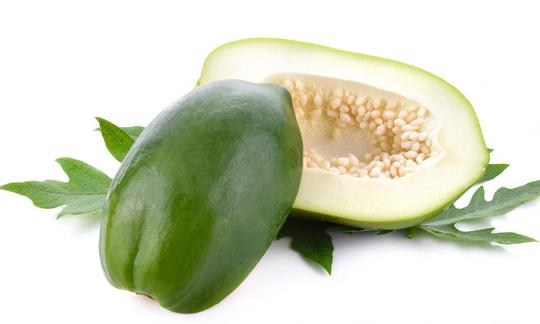

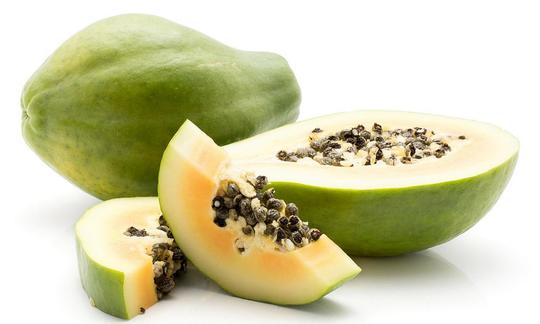

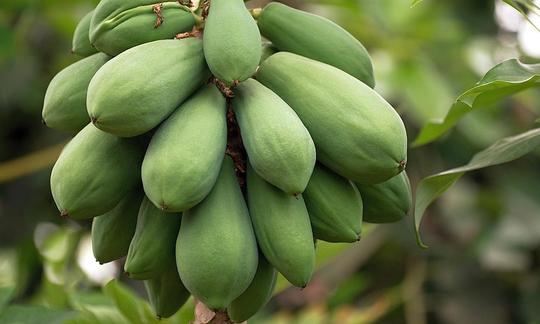

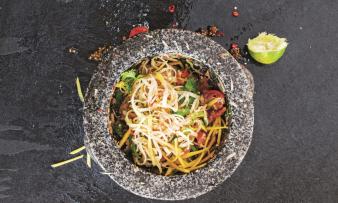
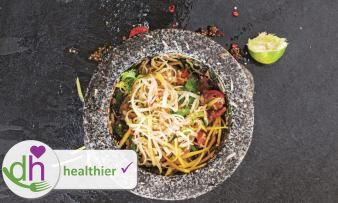





Comments